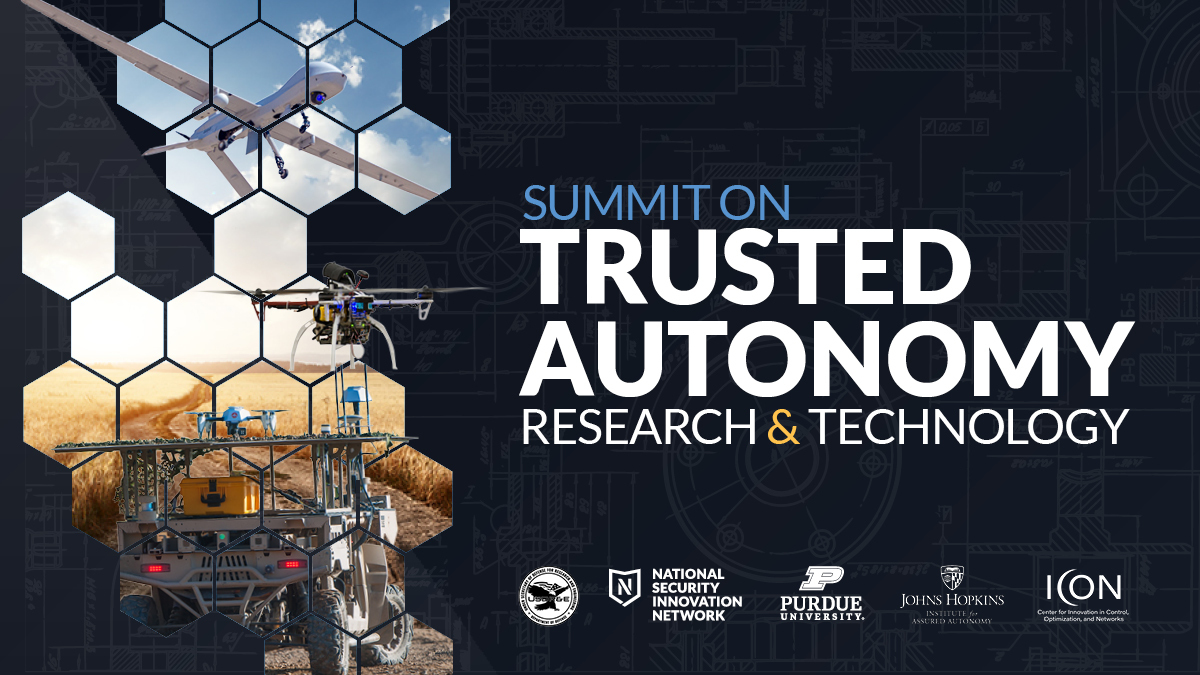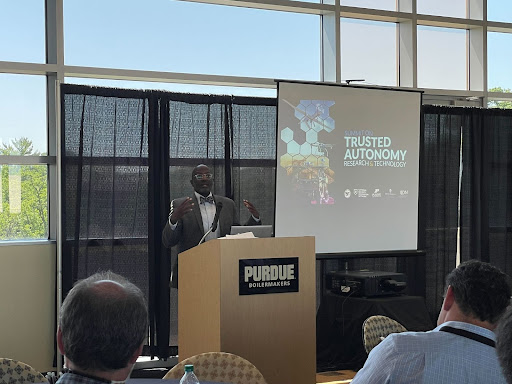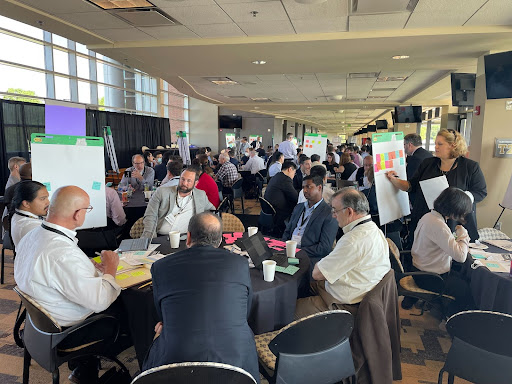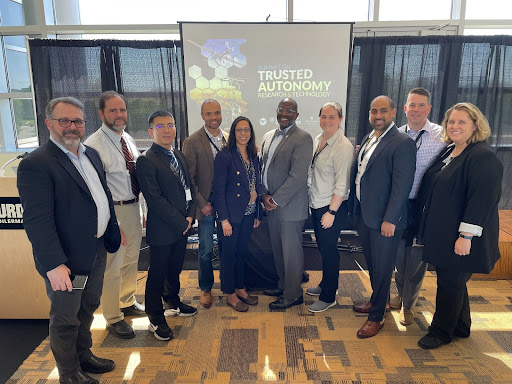
Autonomous Tech Summit Brings Together Defense, Academia, and Venture Capital

Academia, ventures and the DoD joined together at Purdue University last week for the Summit on Trusted Autonomy Research and Technology (START) to advance solutions capable of delivering trusted autonomous assets to warfighters in contested environments. The summit, a convening event supported by the National Security Innovation Network (NSIN), provided an opportunity for academics and industry partners to engage with the Office of the Undersecretary of Defense for Research and Engineering (OUSD(R&E)) on its OPTIMA initiative and to find pathways forward for the Department of Defense (DoD) on autonomy.
At the summit, Dr. David A. Honey, Deputy Under Secretary of Defense for the OUSD(R&E), provided opening remarks about the OPTIMA Initiative, explaining, “It is clear that the future of warfare includes autonomous systems. In OSD(R&E), we are assisting the military services in leveraging autonomous systems. The reliability and functionality of autonomous systems will be key to successful future combat operations. An essential aspect of this development effort will be the Operational Trust in Mission Autonomy, or OPTIMA initiative.”
Dr. Jaret Riddick, Principal Director of Autonomy at the OUSD(R&E), added in his remarks, “The main future goal [of OPTIMA] is to deliver trusted autonomy on the battlefield for the warfighter in complex and contested environments.”

Dr. Jaret Riddick, principal director of autonomy at the OUSD(R&E), shares the DoD vision for trusted autonomy at START.
Over the two-day summit, civilian and military participants discussed areas of interest in autonomy that the groups have in common, such as investments, regulations, and research. Participants were divided into teams with others from different industries for breakout sessions to share their unique perspectives and experiences to help create a roadmap for OPTIMA to quantify trust in autonomous technology. As they spent more time listening to each other, the teams began to understand the constraints and limitations of the others, then began to innovate new ideas that would work for everyone.

Participants from ventures, academia, and the DoD comprised teams to learn from each other’s unique perspective on autonomous technology.
“Part of this initiative will be to encourage cooperation with industry, academia, and the venture capital community to bring together groups working in the autonomy tech vertical to help focus investments and identify areas for collaboration. The opportunity for both is significant,” said Dr. Honey. “Industry invested more than $97 billion into mobility and autonomy startups in 2021, and our partners at NSIN reported that their autonomy tech program alumni raised nearly $600 million over the last five years, no small feat.”
The DoD will apply the lessons learned from the summit to successfully support a science and technology strategy for trusted autonomy that will make the country safer and quickly put new, valuable technology into the hands of warfighters.
Dr. Honey explained that autonomous technology could enhance the performance of warfighters by providing them immediate feedback during training. He said, “weapon systems of the future ought to be designed with the appropriate ease of use human-machine interface so it will become much more intuitive for use during those immersive training events and during actual combat operations.”
As for next steps, OUSD(R&E) will brief DoD stakeholders on its findings and conversations from the summit to increase collaborations with venture and academic communities.

(From left to right): Dana Franz (PD Autonomy), Mike DiPaolo, (PD Autonomy), Shaoshuai Mou (Purdue), Shreyas Sundaram (Purdue), Neera Jain (Purdue), Dr. Jaret Riddick (OSD(R&E)), Sarah Rigsbee (JHU IAA), Kedar Pavgi (NSIN), Reed Skaggs (Lewis Burke), and Cara LaPointe (JHU IAA).
“Delivering trusted autonomy is a DoD priority,” said Kedar Pavgi, NSIN program manager. “NSIN was pleased to support this event and to partner with Dr. Riddick, The Principal Director for Autonomy, OUSD(R&E); Purdue University’s Center for Innovation in Control, Optimization and Networks (ICON); and The Johns Hopkins University Institute for Assured Autonomy (JHU IAA). Looking ahead, through NSIN programming, we are ready to support OPTIMA through technology development, talent acquisition, and augmentation through our network.”
Watch remarks by Dr. David A. Honey, Deputy Under Secretary of Defense for the OUSD(R&E)
Watch the remarks by Dr. David A. Honey here.
About National Security Innovation Network
National Security Innovation Network (NSIN) is a government program office within the Office of the Secretary of Defense for Research and Engineering (OSD(R&E)) that collaborates with major universities and the venture community to develop solutions that drive national security innovation. We operate three portfolios of programs and services: National Service, Collaboration, and Acceleration. Together, these portfolios form a pipeline of activities and solutions that accelerate the pace of defense innovation.